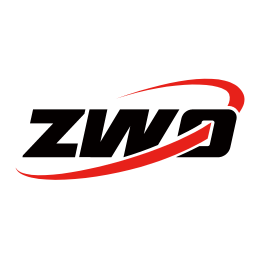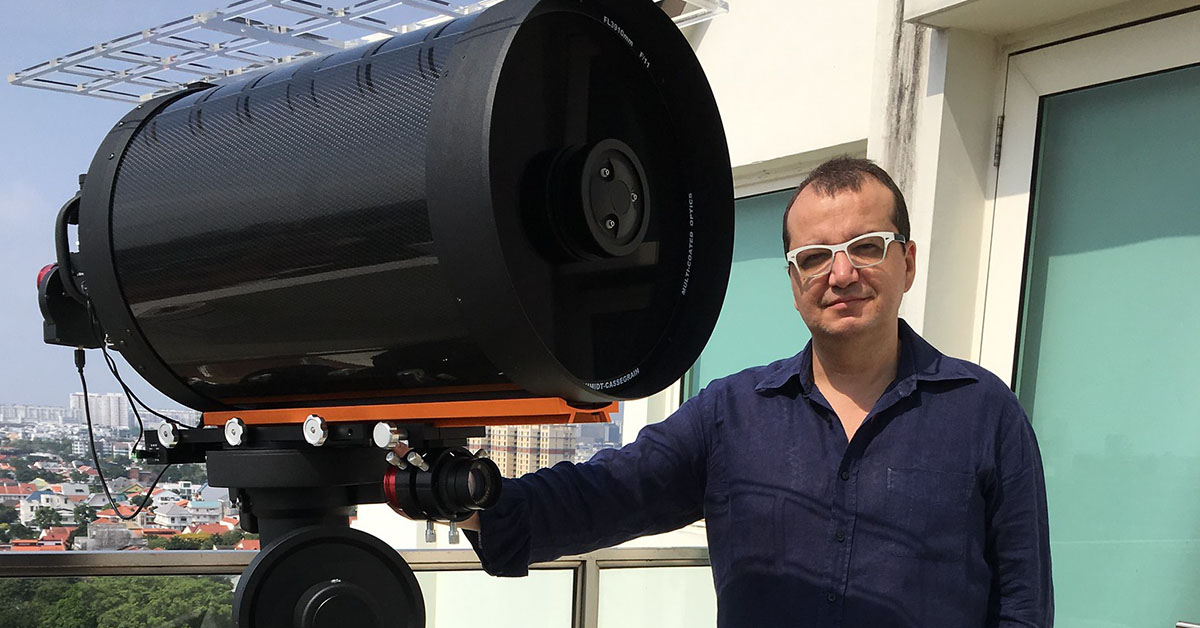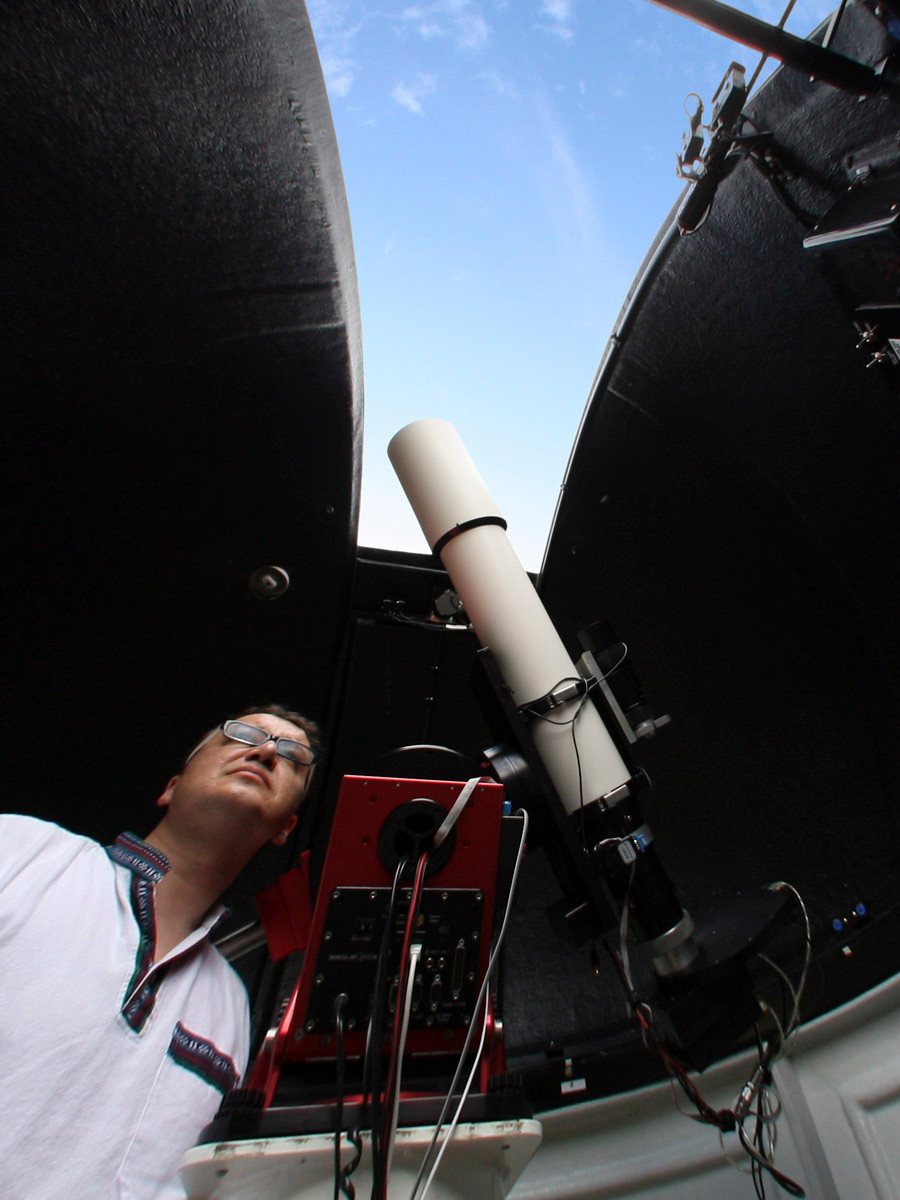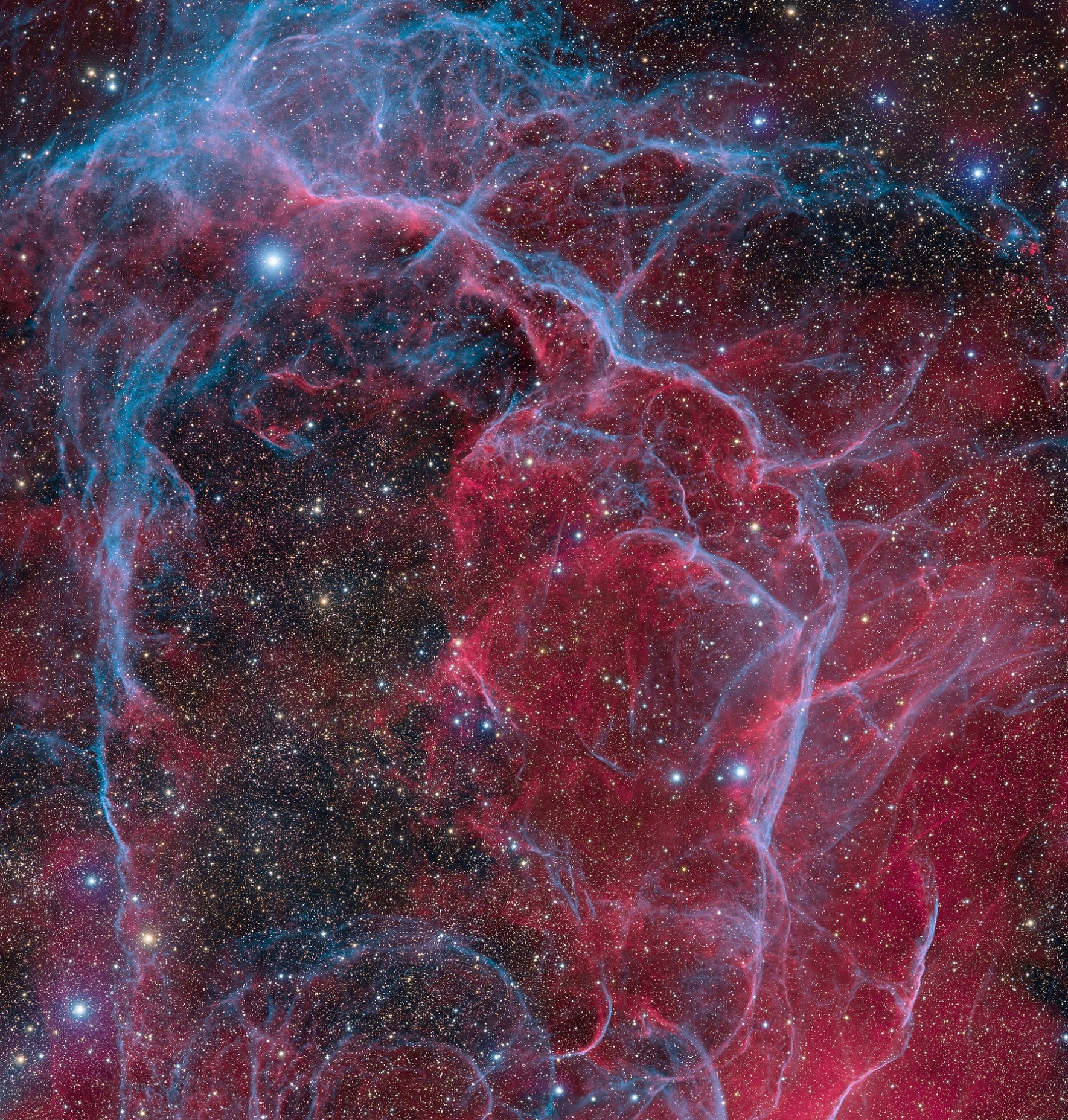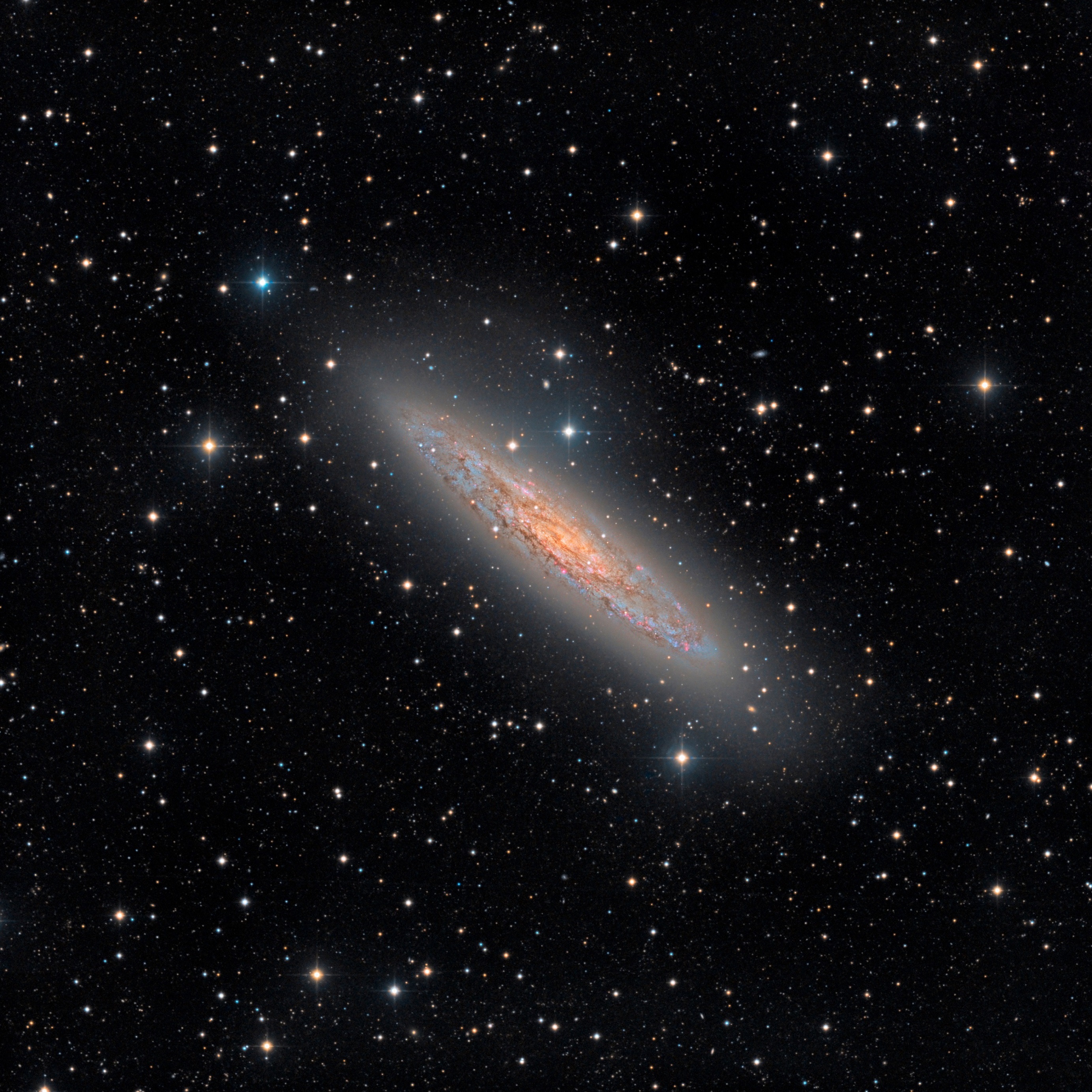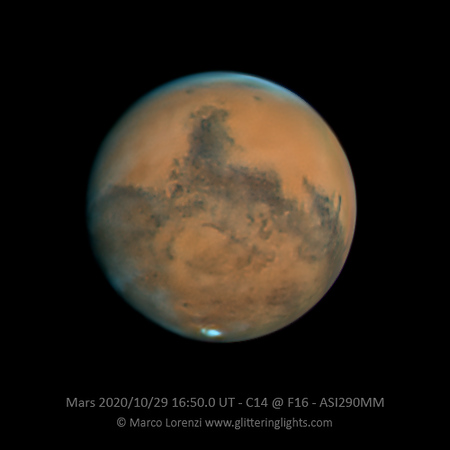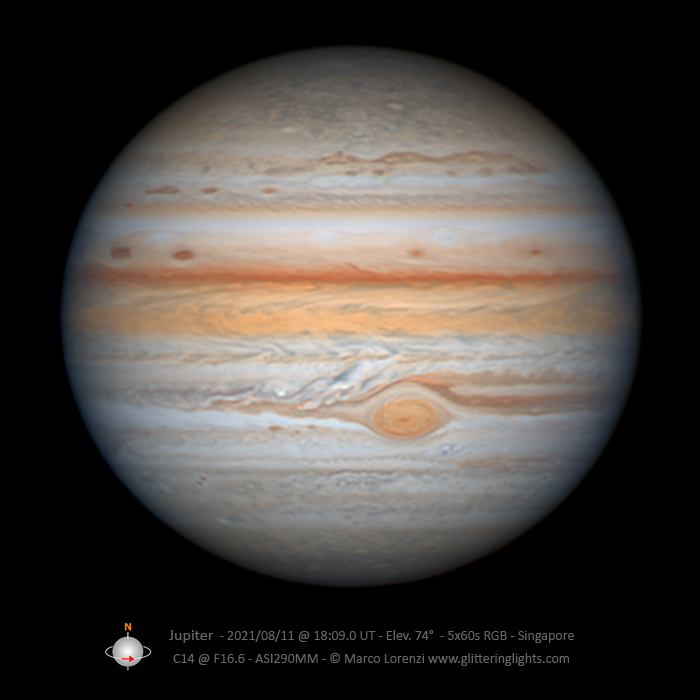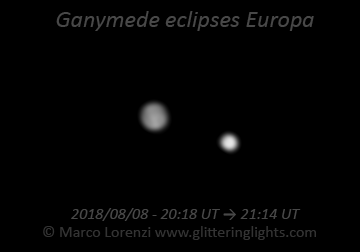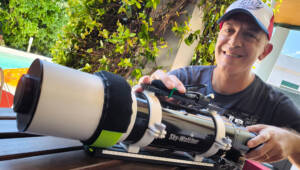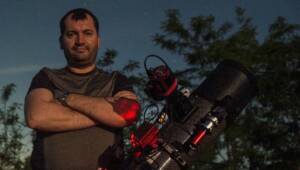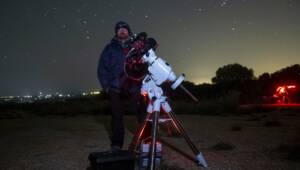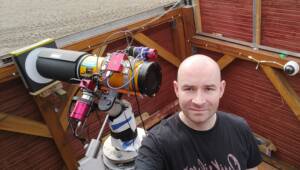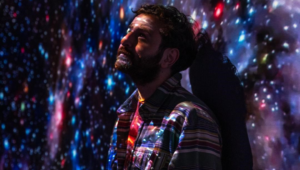Q1: At first, congratulation that your nice image won #ASIWEEK. Can you introduce yourself to us?
I was born in Italy 50 years ago and I have been fascinated by the night sky since my childhood.
I took my first picture of a constellation at the age of 14, and here I am, several decades after, still pursuing this desire of imaging the night sky.
15 years ago, “Life” took me to Asia, first to Shanghai and then to Singapore, where I currently live with my family. The dramatic light pollution of these megacities combined with the difficulty to access dark skies at a reasonable distance, pushed me to install all my deep sky equipment in the Australian outback, in a small observatory I built and remotely controlled over the internet. With that setup, I took most of my deep sky pictures, of which several were published in astronomical magazines and books around the globe as well as used by scientific institutions, with a dozen selected as Astro-Photo Of the Day (APOD) by NASA and a couple which in 2011 even won the first prize in the “astronomy photographer of the year” challenge run by Maritime Museum and Royal observatory of Greenwich.
Myself with the C14 in Singapore
Q2: Why do you love astronomy? What does it mean to you?
The sense of wonder and my unsatiable curiosity are the main drivers of this passion, or, as I should better describe it, this obsession 😊 Astronomy, and in particular Astrophotography, is my lifelong hobby and my greatest antidote to the daily stress, helping to look at everything life throw at you with the right perspective.
Are we alone in the universe? What are our personal problems in from of all of this? Snake Nebula in Ophiuchus, Pentax 67 EDIF 300mm f/4 – FLI Proline 16803
Q3: What gear do you use for astrophotography? Any pictures of them?
I have owned and used really a lot of different instruments during the last 4 decades of imaging, and I am still constantly changing and updating my equipment. For most of my deep-sky work, I used a TEC 140ED Apo till I upgraded to an OS 20” Astrograph, which I hope to put at full service soon. For planetary work I have been using mostly SCT, in particular a C14 matched with your amazing planetary cameras which has been my workhorse during the last 3 years and which is the scope visible in my introduction image.
TEC140 APO in my dome in Australia
Q4: It seems to us that you like more planetary imaging than DSO imaging, can you tell us the reason?
Well, not really, I started with deep-sky astrophotography, which I love at least as much as planetary and wide field astrophotography 😊 However, as the current pandemic begun while I was relocating my remote observatory, I had to put my deeps sky activity on hold, so I have been focusing mostly on planetary imaging in the last year and half, which I can do from my apartment terrace. But I hope to get back on imaging the deep-sky soon! Most of my images, deeps sky and planetary, are visible on my website at https://www.glitteringlights.com
The Vela supernova remnant with the TEC 140 – FLI Proline 16803
NGC253 with the Rifast 500 – FLI Proline 16803
The Tarantula Nebula in LMC with the Rifast 500 & FLI Proline 16803
Q5: Your ASIWEEK image “Jupiter” was outstanding! How did you capture it?
This is a classic “lucky imaging” technique, where your planetary camera has been used to take several high frame speed videos at high power (long focal length). The excellent seeing of the night combined with the well-tuned equipment and a bit of processing made the magic.
Q6: What do you think is the most difficult part of planetary imaging? How do you overcome it?
It is a mix of several factors. First you need a good quality equipment and you need to make it work at best, with the optics properly cooled and collimated. To give the idea how important this is, I check and fine tune the collimation several times every single observing session, at least every time I get the telescope moving to different part of the sky! Then you need a good understanding and command of the several pieces of software used to take the images and process them. I use 7 (and sometime even more) different programs from star to end. Last (but not least!) you need what is probably the single most important success factor for planetary imaging: a great seeing. Luckly, from my home in Singapore I have the ecliptic almost crossing over my head, so planets can be imaged at very high elevation and limited effect of light dispersion. Furthermore, being close to the Earth’s equator, here the jet stream has almost no influence, so my local seeing conditions are often good or even excellent. On the negative side, weather in Singapore is quite unstable, with very few nights every month clear enough to take images, in particular during the raining season.
Saturn, tech details on image, C14- ASI290MM
Mars tech, details on image, C14- ASI290MM
Jupiter, tech details on image, C14- ASI290MM
Q7: How do you think the future of astrophotography if take the increasingly heavy light pollution and the rapidly developed technology into consideration?
Light pollution is one of the biggest threads for us and I have seen first-hand how much the sky brightened up year after year. Like for other significant challenges we are facing (e.g. global warming), I believe the single most important action we have to pursue is to educate the public of the negative impact of light pollution. If we want our kids to enjoy the same sense of wonder we did, if we want to be able to enjoy our hobby for much longer, we need to get our society changing introducing rules and controls over the unchecked mis-usage of artificial light.
The milky way imaged on film 20 years ago from Namibia.
Q8: Are you active in other astronomy-related activities except from astrophotography? And do you have interest to contribute to astronomical scientific community?
When I was still living in Italy, I used to collaborate with few astronomy magazines (mostly articles on imaging and processing techniques) and I gave public speeches and observation tours to the public in our association public observatory. Unfortunately, I got too busy with work and family in recent years to do the same in Asia. I am however in contact with some pro-am initiatives related to specific researches, so I still hope to be able to contribute and do some real science in the future.
The rich galaxy cluster in Fornax, TEC140 – FLI Proline 16803
Q9: Will your family member stay with you during the shooting?
My wife is very patient with my hobby. Together with my daughters, they all enjoy peering through the telescope time to time. However, none of them really like exposing themselves to mosquito bites in our hot and humid weather every night I am observing. 😉
Q10: What photography goal do you have for the second half of this year?
I want to keep monitoring this year Jupiter’s satellite mutual occultations and eclipses, and I am starting another imaging adventure with a couple of friends which is too early to mention at this moment but I am confident it will bring some results and satisfactions in the coming months. I am pretty sure the even for the second part of the year I will keep being busy with astronomy as always. After all, my most exciting project is the one yet to come. 😊😊
Mutual, C14- ASI290MM
Ganymede occults Europa, C14- ASI290MM
Ganymede eclipses Europa. C14- ASI290MM
Q11: Do you have any suggestions or feedback to us?
I love your products and I own and use more than half dozen cameras from you. I found your products very reliable, both for hardware and software, which is not something I can say for many other manufacturers I used in the past, so I really believe you are already a leading manufacture in the field. I wish you could develop some new planetary cameras with USB-C port, as larger and faster SSD are available now so being able to image with larger FOV (in particular on Solar and Lunar imaging) at high fps would be a great opportunity. But as said, for being a relatively young company in the field you did everything right so far, so kudos to you and your team for the achievements, I am sure I will keep being a good customer of yours for years to come. 😊
